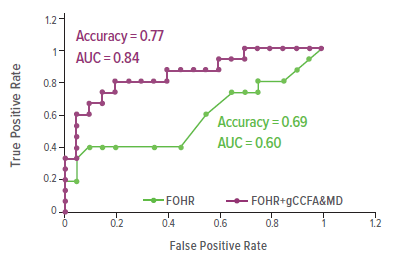NeurDTI Imaging Helps Predict Which Prenatal Myelomeningocele Patients May Require Later Surgery
Published February 2021 | Journal of Neurosurgery: Pediatrics
Diffusion tensor imaging (DTI) values could predict which patients receiving prenatal myelomeningocele (MMC) repair would likely later need cerebrospinal fluid (CSF) diversion surgery for MMC-associated hydrocephalus, according to a study led by experts at Cincinnati Children’s.
Spina bifida occurs in about three to four babies per 10,000 live births. MMC is the most severe form of spina bifida. Among MMC patients, hydrocephalus is the most common chronic disease leading to further hospitalizations and need for care.
Prenatal MMC surgical repair slows the development of hydrocephalus, and ultimately can reduce the need for CSF diversion to 40% instead of 80-90% for postnatal repair. The prenatal approach also allows for more time to obtain imaging data to study white matter diffusion abnormalities, which can help determine which patients should proceed to CSF diversion.
Retrospectively analyzing data from 35 pediatric patients after prenatal MMC repair, researchers found that DTI values were more accurate as a predictor compared to fronto-occipital horn ratio (FOHR) alone. With further study, researchers believe incorporating DTI into overall management of hydrocephalus will reduce clinical bias and significantly improve therapy guidance.
“This study has generated important data to potentially support the design of a clinical trial based on both conventional clinical measures and neuroimaging biomarkers,” says Francesco Mangano, DO, director, Division of Neurosurgery and senior researcher on the study.
The team is conducting a pilot neuroimaging study to assess the application of fetal DTI in studying white matter integrity prior to fetal MMC surgery.Determining the Need for CSF Diversion Surgery
Increasing sensitivity and specificity for predicting the need for surgery, using ventricle size (FOHR: fronto-occipital horn ratio, an index used clinically for assessing need for CSF diversion surgery) only to using both FOHR and DTI indices.






